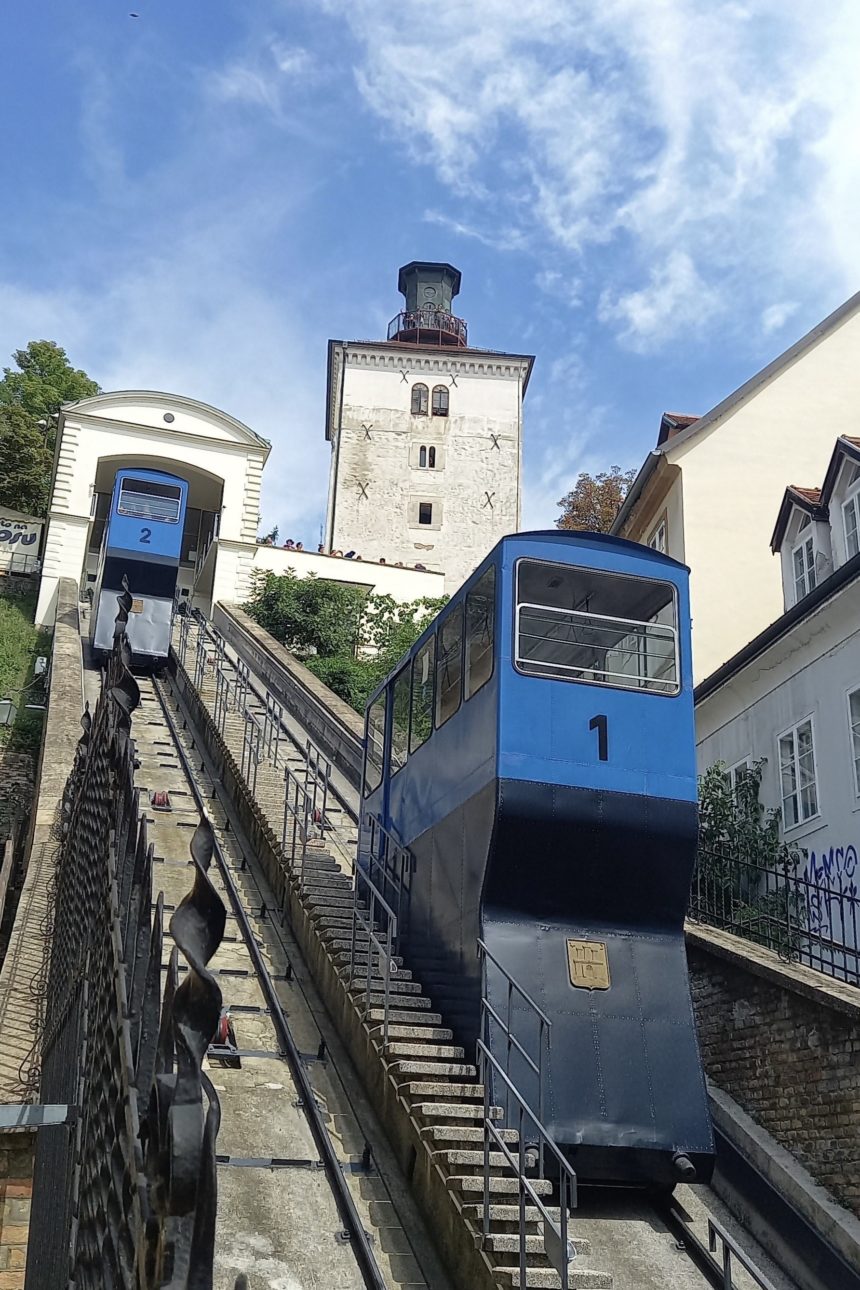As noon on a hot summer day approaches, the hustle and bustle of Zagreb’s city center become louder and more cheerful. There is a particularly pleasant mood at the entrance to the Upper Town, at the top of the city’s funicular under the Lotrščak tower, where a group of school children begins the countdown: 10, 9, 8, 7, 6, 5, 4, 3, 2, 1… and a loud “Boom” breaks through the city center, forcing into the flying birds from the surrounding roofs. From one of the tower’s two windows, the white smoke disappears into the blue sky, and at the other, a cannon gunner appears, waving to the children, who thank him with joyful applause. It is the Grič cannon, that fires a shot at noon every day for almost 150 years.
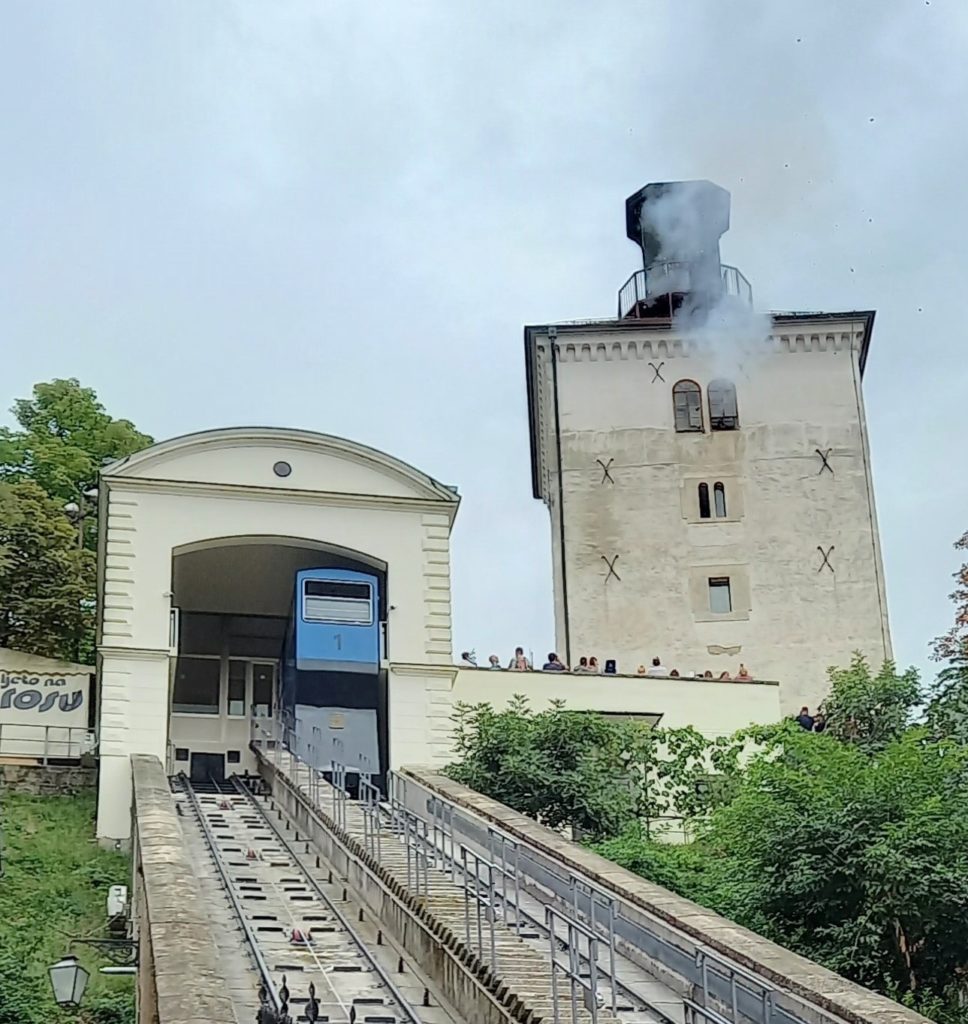
The Lotrščak Tower
The cannon is placed on the top of the Lotrščak Tower, once the southern entrance of the Zagreb Old Town, and it is the town’s best-preserved object, built in the mid-13th century. Back then, the Croatian-Hungarian King Bela IV was fleeing from Tartars, and Gradec (Old Zagreb) secured him shelter. In gratitude for the safety and hospitality, King proclaimed Gradec a free royal city in 1242 with the famous The Golden Bull, and with the document he obliged the Gradec citizens to build a safety system around town, with walls and towers, which was done in the next 24 years. In 1244 The Lotrščak Tower was raised, and named after “the bell of thieves” in Latin “campana latrunculorum” (therefore the name Lotrščak) which chimed every night around 9 pm, before the closing of the city doors. Originally the Lotrščak was built next to the Dverce town door, which was later demolished, leaving an open entrance street to the Upper Town. Its original fortification purpose was lost after the danger of Turkish invasions was gone by the end of the 16th century.
The oldest image of the Tower was preserved on a schematic ground plan of Zagreb from the beginning of the 16 century, showing a two-story tower of a square floor plan with two windows on each story and a hip roof. In the 18 century, the roof got a smaller tower, and the tower entrance with staircase was placed on the north facade. In the later 19 century, during the period of the Romantic wave of restoration of medieval buildings, Lotrščak Tower was redesigned, and two floors were added, and a wide wooden tower on top of the roof too. Also, a small observation gallery around it was built, enabling the great views of the city until today. It was built in 195 cm thick stone walls, except for the fourth floor which was built from brick. The Tower as we see it today was finally formed in 1958.
Initially purposed as a fortification Tower, it later also served as a warehouse, a wine cellar, a fireman’s alarm tower, the billiards club… After the Dverce town doors were demolished and the city promenade on the southern slope of Grič hill reconstructed, a small cafe was installed on the ground floor of the Tower with a southern entrance.
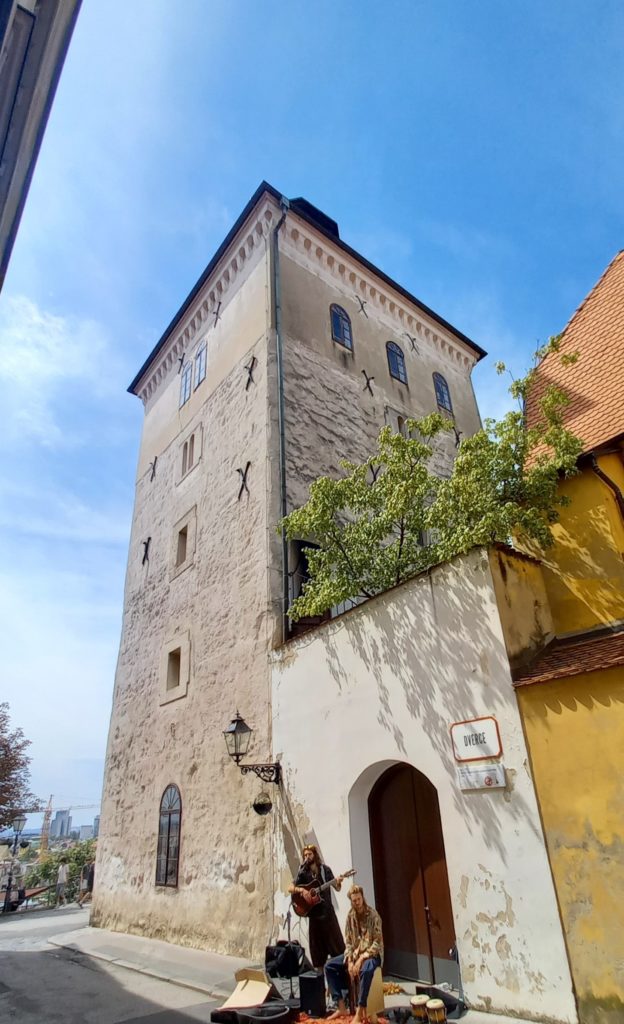
The Grič cannon
In 1876 Zagreb city government decided to get a cannon that will fire every day exactly at noon so that the citizens and the bell ringers of all the city’s churches can align their watches with it. Constructed by an ingenieur from Zagreb, made in the city’s machine factory and iron foundry in Magazinska street, the cannon first fired a shot on New Year 1877, establishing the noon firing tradition that we are proud of today.
At first, the cannon was placed on the top floor of the Royal Institut for Meteorology at Grič. During the First World War, the cannon of Grič stopped firing, mostly because of the shortage of gunpowder but also potential fear by citizens. It was forgotten until 1927, when it was renovated, moved to Lotrščak Tower, and loaded with new appropriate ammunition. As the town had grown bigger, small cannon with a 22 mm barrel had to be replaced with a bigger and more powerful one, as it was done in 1928 with a new 40 mm barrel cannon, one meter long on a heavier two-wheels gun-carriage. For better accuracy, a new time regulator with a sweep-hand was bought in Switzerland.
Being a cannon gunner is a special privilege. The first one shooting from the new cannon was an explosive specialist Mr. Marijan Frobe who was firing after the phone signal from 1928 to 1973. Mr. Marijan Novosel followed the duty on the new cannon from 1973 until 1987, the year of the University Games in Zagreb when the cannon was replaced once again with a 75 mm barrel cannon, 3.5 m long left at the end of World War II, which is still in use. Mr. Stjepan Možar was a gunner until 2008 when the duty was taken by Mr. Alem Tutundžić, who announces the noon of Zagreb until today.
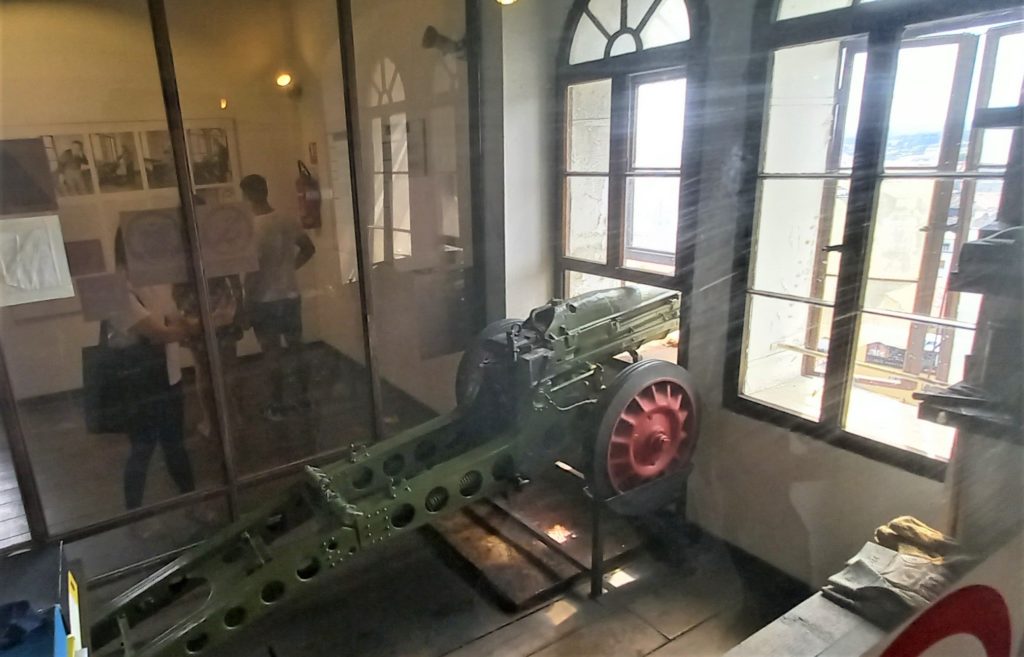
The blue funicular
Zagreb funicular connects the Lower and the Upper town in Tomićeva street, at the foot of Lotrščak Tower. Built in 1893 it is the oldest engine means of transportation in Zagreb, whose steam engine was replaced with an electric one in 1934. Zagreb’s blue funicular is probably the world’s shortest, with only 66 meters long track, driven in 64 seconds. It has been legally protected as a cultural monument, due to its preserved original appearance, construction, and technical features.
Its first long pause in transporting happened between 1969 and 1974 due to technical problems and reconstruction. The second time it stopped firing was in march 2020 and again in December 2020 due to earthquakes that happened in Zagreb and nearby Petrinja. It continued operating again at the beginning of 2022.
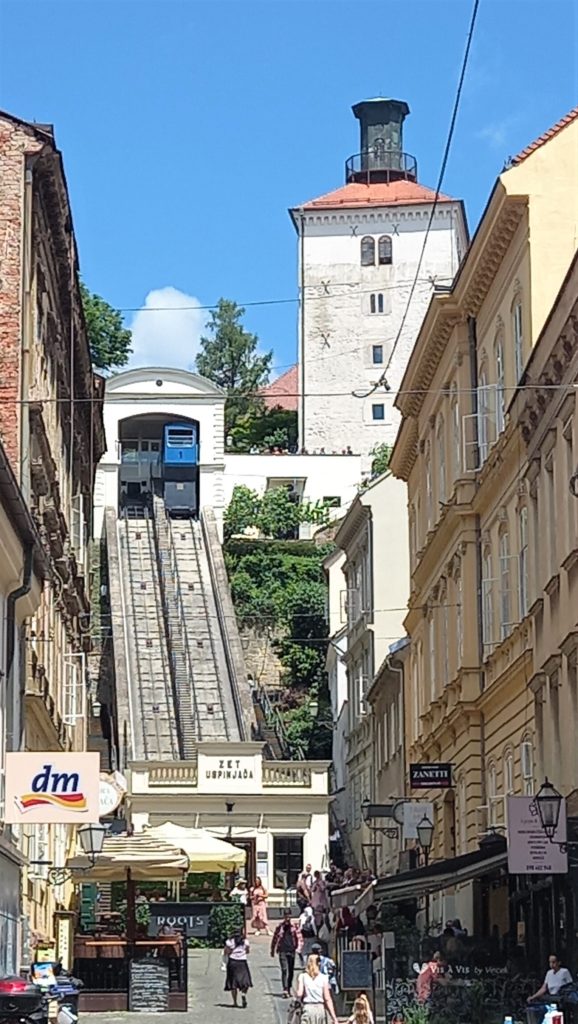
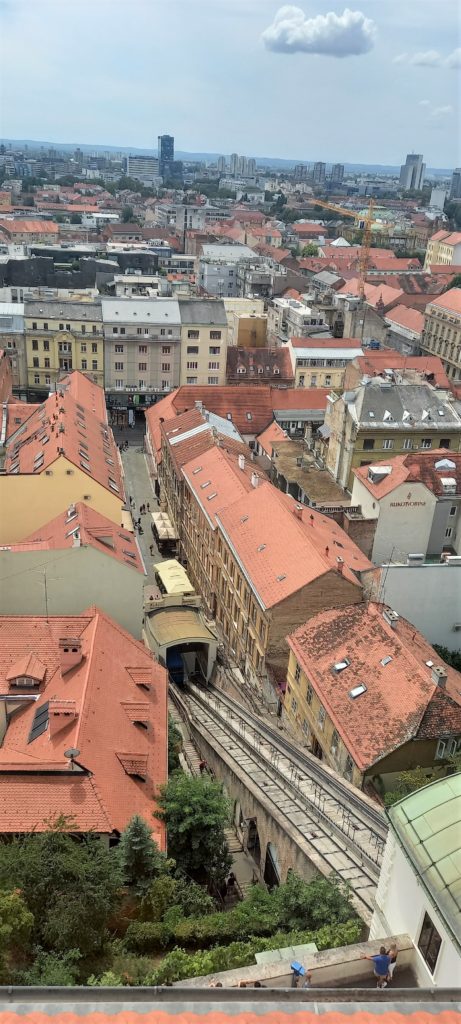
Zagreb blue
Both the Tower and the Funicular are city monuments, symbols of the southern facade of the upper town, and along with the city cannon, Grič promenade, the tunnel underneath the hill, the St. Mark Church, known for its brightly coloured tiled roof, nearby Dolac market, the Cathedral… they are for many the heart of Zagreb.
But how did blue become the colour of the city? Although the city is often called “Beli Zagreb grad” (The white Zagreb) and red is the colour of its most popular souvenirs, red licitar heart and red umbrellas, the city colour is the special shade of blue – the Zagreb blue.
Besides the clear blue sky above it, the blue Sava river and the lakes, the city transportation trams, busses and funicular are blue, and also are the flag and the coat of arms of the city. Zagreb soccer club Dinamo Zagreb and its fans Bad Blue Boys wear proudly a darker kind of blue. And also some businesses have “plavi”, the blue, in the name, like restaurants, radio station, and hotel.
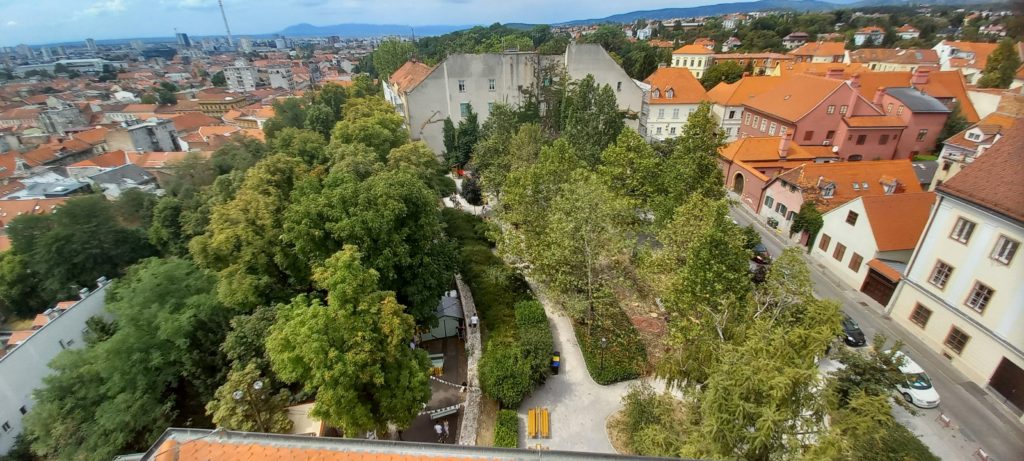
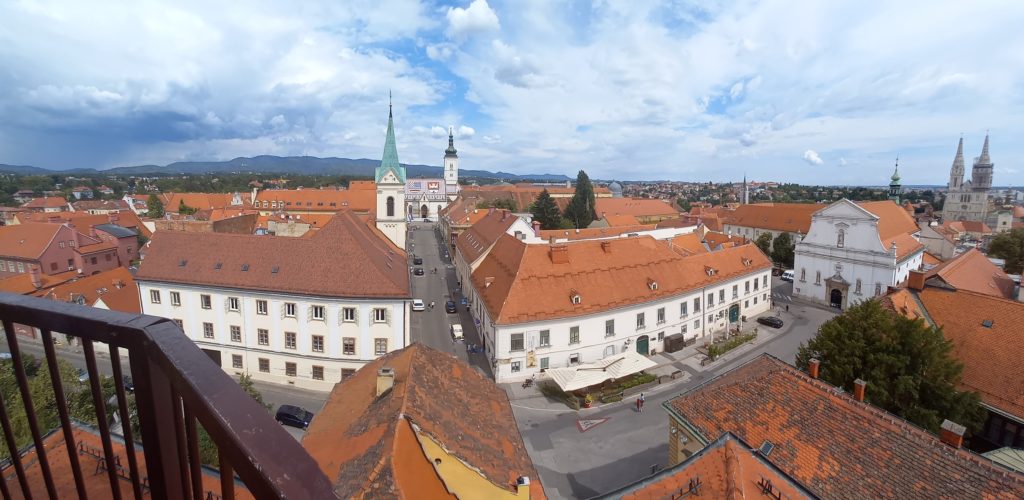
To discover the most important moment of Zagreb’s daily life, one should hang out around noon near the funicular, but should also be prepared for a loud announcement of the exact time at a strong 140 decibels, so that, like some uninformed tourists, you do not find yourself under the table of a local cafe.
XXXXXXXXXXXXXXXXX